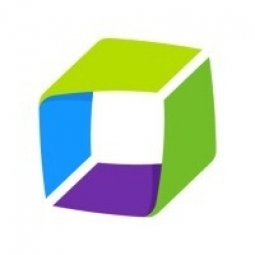Technology Category
- Cybersecurity & Privacy - Application Security
- Cybersecurity & Privacy - Identity & Authentication Management
Applicable Industries
- Finance & Insurance
- National Security & Defense
Use Cases
- Tamper Detection
- Usage-Based Insurance
About The Customer
USI Insurance Services is a company founded in 1994 that provides tailored insurance services to over 500,000 clients across the United States. The company has over 10,000 employees in 200 offices and generates a revenue of $2.5 billion. USI delivers its services through cutting-edge home-grown and third-party solutions, including the USI ONE platform, which enables employees to use analytics, network resources, and strategic planning tools to create fully customized insurance offerings for customers. The USI ONE platform relies on sensitive customer data to ensure USI’s offerings are aligned to their unique needs.
The Challenge
USI Insurance Services, a provider of tailored insurance services, was facing challenges in maintaining the security of its sensitive customer data and delivering better end-user experiences. The company's teams were relying on time-consuming manual processes to scan for vulnerabilities in their home-grown and third-party solutions, including the USI ONE platform. These scans were static and focused on pre-production, making it easy for newly discovered vulnerabilities to go undetected in production environments until the next scheduled scan. It was also difficult to spot vulnerabilities within some third-party applications, which remained a ‘black box’ for USI’s teams. In addition to these security challenges, USI also experienced application performance issues that were affecting end-users, and teams were losing valuable hours of productivity.
The Solution
To address these challenges, USI needed an intelligent observability and security platform that could provide visibility across its complex environment. It needed a solution that could automatically identify and prioritize vulnerabilities and performance issues in production applications based on risk to the business, its employees, and customers. After evaluating the market, USI selected Dynatrace as the best fit for its needs. With Dynatrace, USI can continuously monitor every tier of its application stack automatically. As a result, teams have the answers they need to resolve issues before they impact users and catch vulnerabilities before they’re exploited. Dynatrace is also helping USI to lay the foundations for a longer-term shift towards a DevSecOps culture, with its single source of truth enabling teams to collaborate more easily to release better software faster, and to detect and respond to flaws in production applications more efficiently.
Operational Impact
Quantitative Benefit

Case Study missing?
Start adding your own!
Register with your work email and create a new case study profile for your business.
Related Case Studies.

Case Study
Real-time In-vehicle Monitoring
The telematic solution provides this vital premium-adjusting information. The solution also helps detect and deter vehicle or trailer theft – as soon as a theft occurs, monitoring personnel can alert the appropriate authorities, providing an exact location.“With more and more insurance companies and major fleet operators interested in monitoring driver behaviour on the grounds of road safety, efficient logistics and costs, the market for this type of device and associated e-business services is growing rapidly within Italy and the rest of Europe,” says Franco.“The insurance companies are especially interested in the pay-per-use and pay-as-you-drive applications while other organisations employ the technology for road user charging.”“One million vehicles in Italy currently carry such devices and forecasts indicate that the European market will increase tenfold by 2014.However, for our technology to work effectively, we needed a highly reliable wireless data network to carry the information between the vehicles and monitoring stations.”

Case Study
Safety First with Folksam
The competitiveness of the car insurance market is driving UBI growth as a means for insurance companies to differentiate their customer propositions as well as improving operational efficiency. An insurance model - usage-based insurance ("UBI") - offers possibilities for insurers to do more efficient market segmentation and accurate risk assessment and pricing. Insurers require an IoT solution for the purpose of data collection and performance analysis

Case Study
Data Capture for Afghanistan Forces
Electronic equipments on the field of Afghanistan provided information on the status of the vehicle and to identify potential threats surrounding it to the British Force. The monitoring and interpretation of this data requires robust and sophisticated digitization for data capture and communication.

Case Study
Smooth Transition to Energy Savings
The building was equipped with four end-of-life Trane water cooled chillers, located in the basement. Johnson Controls installed four York water cooled centrifugal chillers with unit mounted variable speed drives and a total installed cooling capacity of 6,8 MW. Each chiller has a capacity of 1,6 MW (variable to 1.9MW depending upon condenser water temperatures). Johnson Controls needed to design the equipment in such way that it would fit the dimensional constraints of the existing plant area and plant access route but also the specific performance requirements of the client. Morgan Stanley required the chiller plant to match the building load profile, turn down to match the low load requirement when needed and provide an improvement in the Energy Efficiency Ratio across the entire operating range. Other requirements were a reduction in the chiller noise level to improve the working environment in the plant room and a wide operating envelope coupled with intelligent controls to allow possible variation in both flow rate and temperature. The latter was needed to leverage increased capacity from a reduced number of machines during the different installation phases and allow future enhancement to a variable primary flow system.

Case Study
Automated Pallet Labeling Solution for SPR Packaging
SPR Packaging, an American supplier of packaging solutions, was in search of an automated pallet labeling solution that could meet their immediate and future needs. They aimed to equip their lines with automatic printer applicators, but also required a solution that could interface with their accounting software. The challenge was to find a system that could read a 2D code on pallets at the stretch wrapper, track the pallet, and flag any pallets with unread barcodes for inspection. The pallets could be single or double stacked, and the system needed to be able to differentiate between the two. SPR Packaging sought a system integrator with extensive experience in advanced printing and tracking solutions to provide a complete traceability system.

Case Study
Transforming insurance pricing while improving driver safety
The Internet of Things (IoT) is revolutionizing the car insurance industry on a scale not seen since the introduction of the car itself. For decades, premiums have been calculated using proxy-based risk assessment models and historical data. Today, a growing number of innovative companies such as Quebec-based Industrielle Alliance are moving to usage-based insurance (UBI) models, driven by the advancement of telematics technologies and smart tracking devices.







